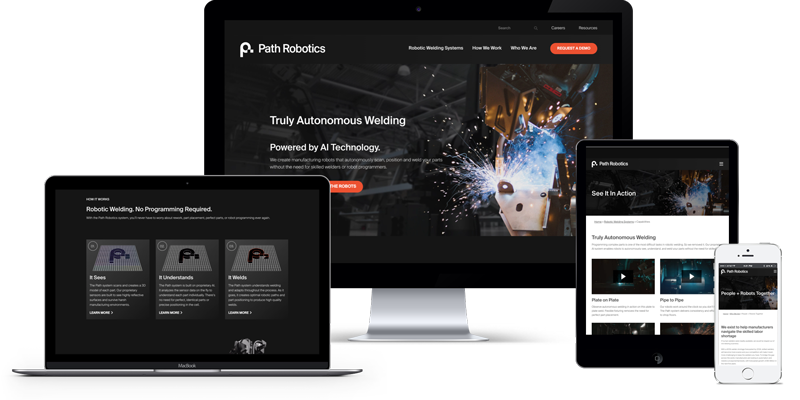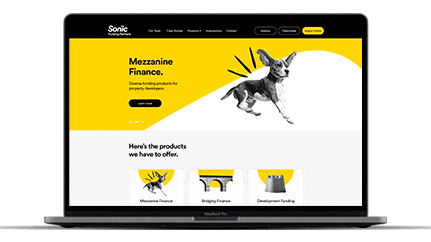Comprehending the Role of Typography in Website Design Excellence
Comprehending the Role of Typography in Website Design Excellence
Blog Article

Crafting a User-Friendly Experience: Essential Aspects of Reliable Internet Site Design
Crucial elements such as a clear navigating framework, receptive layout principles, and fast loading times serve as the foundation for engaging customers effectively. Recognizing the hidden aspects that contribute to reliable style can lose light on just how to boost customer complete satisfaction and engagement.
Clear Navigation Framework
A clear navigation structure is fundamental to reliable internet site design, as it directly affects individual experience and interaction. Individuals should have the ability to situate info easily, as user-friendly navigation lowers aggravation and encourages exploration. A well-organized layout enables site visitors to understand the connection between various web pages and content, leading to longer website gos to and enhanced communication.
To achieve quality, designers should utilize familiar patterns, such as top or side navigating bars, dropdown food selections, and breadcrumb tracks. These components not just boost functionality however additionally provide a feeling of alignment within the site. Keeping a regular navigation structure throughout all web pages is vital; this knowledge assists customers expect where to locate preferred info.
It is also vital to restrict the number of food selection things to stay clear of overwhelming individuals. Prioritizing the most crucial sections and using clear labeling will certainly lead site visitors properly. Furthermore, including search performance can even more help individuals in locating certain material promptly (website design). In recap, a clear navigation framework is not just a style option; it is a critical component that dramatically affects the general success of an internet site by fostering a delightful and efficient customer experience.
Responsive Style Concepts
Reliable site navigating sets the phase for a seamless individual experience, which ends up being much more crucial in the context of responsive design concepts. Receptive layout guarantees that internet sites adapt fluidly to various display dimensions and positionings, improving accessibility throughout tools. This versatility is accomplished with versatile grid layouts, scalable images, and media queries that permit CSS to adjust styles based upon the gadget's features.
Secret concepts of responsive layout include liquid formats that utilize percentages instead of taken care of systems, guaranteeing that aspects resize proportionately. Furthermore, utilizing breakpoints in CSS makes it possible for the design to change efficiently in between various device dimensions, maximizing the design for every display kind. Making use of receptive images is additionally crucial; pictures need to instantly adapt to fit the display without shedding top quality or causing format shifts.
Moreover, touch-friendly interfaces are vital for mobile customers, with appropriately sized switches and instinctive motions improving user communication. By integrating these concepts, designers can create sites that not just look visually pleasing but additionally supply functional and engaging experiences across all tools. Ultimately, effective responsive style cultivates user fulfillment, minimizes bounce rates, and encourages longer interaction with the material.
Quick Loading Times
While customers significantly anticipate sites to pack quickly, quickly loading times are not just a matter of benefit; they are vital for retaining visitors and improving general individual experience. Research shows that individuals generally desert sites that take longer than 3 seconds to lots. This desertion can lead to boosted bounce rates and reduced conversions, ultimately harming a brand name's online reputation and earnings.
Quick packing times improve individual involvement and satisfaction, as site visitors are more probable to discover more helpful hints a site that reacts promptly to their communications. Additionally, internet search engine like Google prioritize speed in their ranking formulas, indicating that a slow website may have a hard time to accomplish visibility in search engine result.

User-friendly User User Interface
Rapid loading times prepared for an interesting online experience, yet they are only part of the formula. An user-friendly interface (UI) is necessary to make sure visitors can navigate an internet site effortlessly. A properly designed UI enables customers to accomplish their goals with minimal cognitive tons, cultivating a seamless interaction with the site.
Crucial element of an user-friendly UI consist of consistent layout, clear navigation, and identifiable symbols. Uniformity in layout aspects-- such as color plans, typography, and switch styles-- helps individuals understand exactly how to connect with the web site. Clear navigating structures, including rational food selections and breadcrumb trails, make it possible for customers to locate info quickly, lowering irritation and enhancing retention.
Additionally, comments devices, such as hover results and packing signs, educate customers about their activities and the internet site's feedback. This openness grows trust fund and encourages ongoing interaction. Focusing on mobile responsiveness makes sure that users delight in a cohesive experience across tools, catering to the diverse ways audiences accessibility web content.
Available Content Guidelines

First, utilize simple and clear language, avoiding lingo that might perplex viewers. Highlight appropriate heading frameworks, which not just help in navigation however also assist screen viewers in translating content pecking orders efficiently. Furthermore, supply alternative message for pictures to convey their definition to users who count on assistive technologies.
Contrast is one more important component; make sure that message stands out versus the history to improve readability. Make sure that video and audio content includes records and inscriptions, making multimedia obtainable to those with hearing disabilities.
Last but not least, integrate key-board navigability into your layout, enabling customers who can not make use of a mouse to accessibility all site attributes (website design). By adhering to these easily accessible content standards, internet designers can develop inclusive experiences that deal with the demands of all individuals, inevitably enhancing customer engagement and satisfaction
Final Thought
In verdict, the combination of vital aspects such as a clear navigation framework, receptive style concepts, quickly filling times, an instinctive customer interface, and easily accessible web content guidelines is crucial for creating an user-friendly web site experience. These parts jointly boost use and involvement, making certain that customers can easily connect and browse with the website. Prioritizing these style aspects not only improves total satisfaction yet additionally cultivates inclusivity, fitting diverse user demands and choices in the electronic landscape.
A clear navigation structure is basic to reliable web site design, as it straight influences user experience and engagement. In recap, a clear navigation structure is not just a layout option; it is a tactical element that significantly influences the total success of a web site by promoting a efficient and enjoyable user experience.
In addition, touch-friendly user interfaces are essential for mobile customers, with appropriately sized buttons and intuitive motions enhancing user interaction.While users browse around this web-site significantly anticipate sites to load swiftly, fast filling times are not just an issue of convenience; they are essential for maintaining visitors and enhancing total individual experience. website design.In verdict, the combination of crucial aspects such as a clear navigating structure, responsive layout principles, quick filling times, an user-friendly customer interface, and available web content guidelines is important for developing an easy to use internet site experience
Report this page